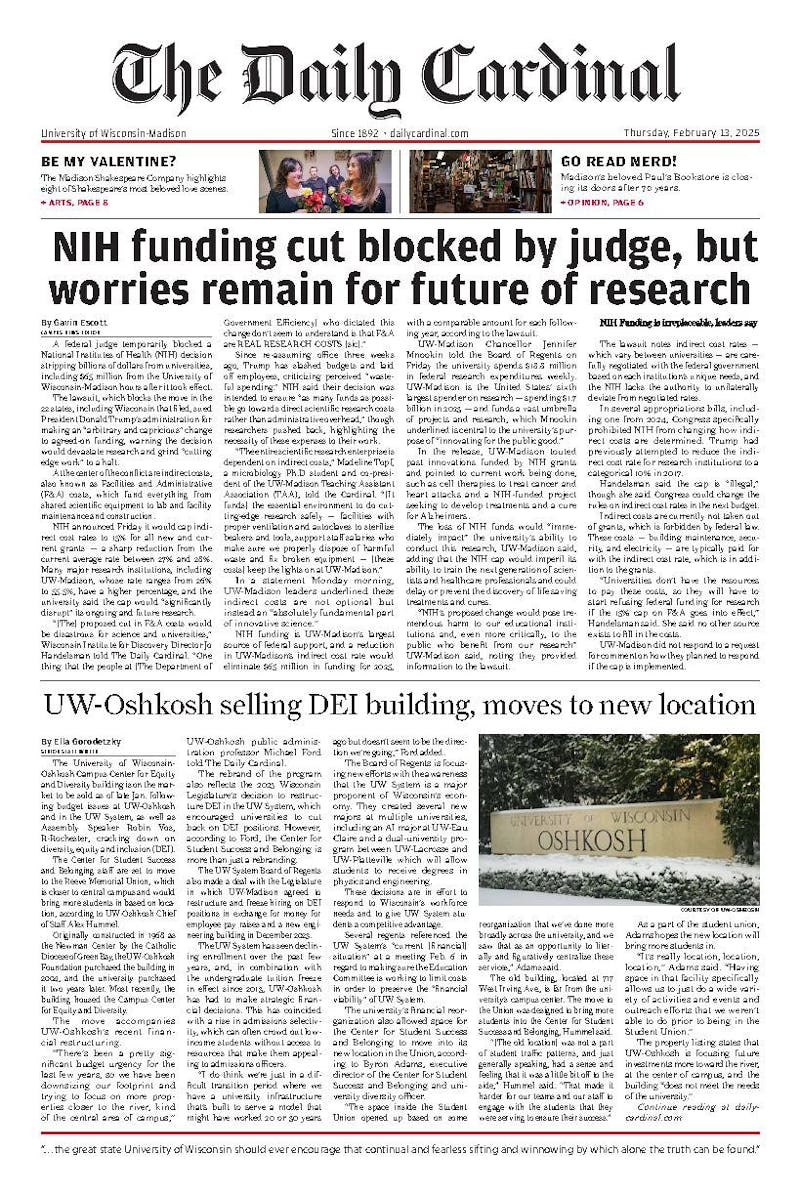They aren't yet making leaps and bounds toward a cure, but rather they are taking baby steps towards comprehension.
For more than 10 years, oncologist Michael Gould and his team of researchers at the University of Wisconsin-Madison have slowly unraveled the mysterious genetic players behind breast cancer. The path has led them to many places: from using drugs found in fruit to genes found in rats.
""If we're going to treat cancer we really need to understand it,"" Gould said. ""Taking care of it has to be very incremental and slow.""
Gould completed his undergraduate studies as well as his M.S. and Ph.D. at UW-Madison. It was in graduate school that he became interested in research and took a job in a lab focused on breast cancer. After completing his post-doctorate in Illinois, he returned to UW-Madison where he is now the director of breast cancer research at the McArdle Laboratory.
When he first arrived at the lab, his team of researchers jumped right in and started screening products to test if they could treat and prevent breast cancer. They found many nontoxic anticancer drugs, called ""monoterpenes,"" within the essential oils of fruits. Monoterpenes prevent the transformation of normal cells to cancer cells at the initiation, promotion and progression stages of cancer.
From Rodents to Oranges
Malignant cancer cells do not remain localized like benign cancer cells. Instead, they spread and infect other organs, generally worsening a patients' condition. Gould's research team found that these drugs were able to inhibit both pre-malignant and malignant cells in rodents without becoming toxic.
The initial compound discovered was Limonene, which increases the activity of liver enzymes that decrease the damaging effects of cancer causing substances. It is found in orange peels and other citrus fruit oils. Furthermore, the first monoterpene to enter into the U.S. Food and Drug Administration approved clinical trials was Perillyl Alcohol found in lavender oil. The drug was found to have the most anticancer activity in rodents.
Although these drugs had both preventative and therapeutic applications, the trials showed limited promise when it came to humans.
Many of these agents were victim of low overall efficiency. They also had undesirable toxicity in other areas of the body because their targets were not specific enough.
""We had limited success,"" Gould said. ""So we thought maybe we could go a different way, but we weren't sure we would be smart enough.""
It's All in the Genes
So the team turned to genetics.
Instead of focusing on therapeutic drugs, they looked to the genetic side of breast cancer to see how good and bad genes were associated with the level of risk in women.
""We are more focused on treatment when we should stress prevention more,"" Gould said. ""Right now we have the tendency to push drugs rapidly into clinics in the U.S."" That, he added, is ""a waste of money and almost unethical.""
To understand the basic mechanisms that cause breast cancer, the lab uses a comparative genetic approach. In 2003, Gould's lab developed ""knockout"" rats, whose genomes are stripped of genes that suppress breast cancer. They first use these rat models to search for alleles, variations of genes located at specific parts of a chromosome, which cause breast cancer.
Then, using DNA collected from about 12,000 women diagnosed with breast cancer, the lab compared the rat alleles to those in women. So far, they have discovered there are alleles that modify the immune system and others that directly relate to breast cancer.
The studies are concentrated on finding common alleles in large populations. The ultimate goal is to determine how the identified alleles modify risk of cancer through molecular, cellular, and organismal mechanisms. Insights into the function can be used for prevention therapeutics.
""It is high-risk research,"" Gould said. ""You don't hang around here waiting for a big hit. Your rewards aren't going to be the home-runs.""
Small Steps, Steady Strides
Gould and a post-doctoral student, Bart Smits, who has worked in the lab since 2006, agree that they find encouragement in small advances. They say the drugs developed from their work may only help one or two people, but you have to have patience.
Patience has paid off for Smits, who is primarily studying nuclear cell architecture and how genes are transcribed. He is searching to find what variants make genes more susceptible to cancer and how variants transcribe sequences, such as for proteins, in cells.
Recently, Smits found that the structure of the locus, the specific location of a gene or DNA sequence on a chromosome, is the same in both rats and humans. He hopes this information can aid in controlling breast cancer.
""It's about motivation and precise work,"" Smits said. ""You just have to keep going no matter what.""






